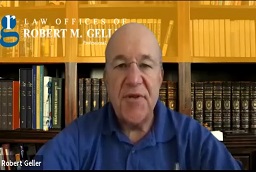Paid search is a dog-eat-dog world, and staying competitive is essential to seeing a substantial return on your investment. Since the paid search space is highly dynamic and ever-changing, what is competitive today might be old news tomorrow. That’s why trusting an expert to assist with your PPC campaigns is integral to maximum success. That said, there are a few current trends that are helping folks stay ahead of the curve. See below for a meaty list of tried-and-true ideas that will help you maximize your paid search efforts!
Table of Contents
How to Build Competitive Google Ads Campaigns
So are you truly interested in building the most competitive Google Ads campaigns your market has ever seen? Here are a few tried and tested tips you can use:
Tip #1: Use the “Paid Competition” section in AdWords.
Although controversial, I stand by the “Paid Competition” feature in AdWords as a truly useful snapshot. It’s ideal in offering high level insight regarding your competition, and if you use this in combination with SERP analysis, it tells a very important story. This section is especially relevant for localized PPC competition, and careful, regular analysis for this purpose can prove to be incredibly useful. It’s definitely a must have for anyone who wants to run the most competitive Google Ads campaigns. Take all results with a grain of salt, however; remember that Google has an agenda with the data they are sharing here, and you should not trust it unequivocally. Use other tools and sources to validate the research, and you’ll be miles ahead of your competition.
Tip #2: Maintain competitive Google Ads campaigns by tagging your URLs.
Tagging your URLs allows you to accurately track all elements of each page, something that proves to be essential is you have competitive PPC campaigns. Many experts shy away from tagging out of fear of revealing too much information to competitors (tagging URLs can provide others the opportunity to get an inside view into your campaign), but I never advocate operating under fear and paranoia. Most competitors don’t have the sophistication to track your campaign on any granular level, and more importantly, the information you can ascertain through tagging far outweighs the risk of giving too much away.
Tip #3: Execute a quarterly competitive analysis.
If you don’t know what your competitors are up to, you are severely missing the boat. And that’s definitely something you can’t have if you want highly competitive PPC campaigns. Many marketers assess competition at the start of the initial analysis, and then never go back to reevaluate at any later date. That’s why a quarterly review is so essential. Every time you reanalyze your own marketing approach, take the time to see what folks in your space are doing as well. You may have new, savvy competitors on the scene, or have past peers that are excelling or falling off the map. Regardless, it’s essential that you be aware of their trajectory. For e-commerce sites, this is all the more critical.
Tip #4: Be highly detailed as you track your competitors.
Competitive analysis should never be a high-level snapshot. Instead, you should be combing through the sites and landing pages of your top competitors just like a customer would. After all, that’s the real basis of setting up competitive Google Ads campaigns. Note how they handle acquisition and retention along every step, and be aware of techniques they use that outdo yours, and vice versa. There are lots of tools – like WhatRunsWhere – that will aid you in your quest to fully comprehend your competition’s Google Ads efforts, but the key here is to stay objective at every turn. Remember that no two companies are the same, so if you see tactics that appear to work for any given competitor, don’t automatically assume it will be a slam dunk for you too. Intelligent analysis is key.
Tip #5: Study impression share metrics.
Impression shares reveal a lot about what’s working and what’s not in paid search, and that’s important information that you need to build competitive PPC campaigns. Impression share stats help you understand why your ads are showing up sparingly throughout the day, and why your competitors may be getting the lion’s share. Google Trends in particular can be very helpful in determining losses due to query flux. If you find your share is lower than you’d like, work on optimizing campaigns that have the lowest impressions by analyzing where the missing clicks would be the least expensive and the most worthy of pursuing.
In a nutshell, the key to having competitive PPC campaigns is by understanding your industry trends, and in turn, the actions of your competition. Whether a competitor has hit a winning streak or has fallen from grace, a thorough understanding of how and why they achieved those results gives you a tremendous amount of knowledge for your current and future PPC campaigns. Let your competitors reveal costly mistakes without you needing to follow suit, and additionally, let them inspire you to more creative heights and greatness. Don’t fall prey to fearing your competition; let them be the fuel that drives you to even higher paid search successes.

Need Google Ads Management Help?
Free Google Ads account review for
qualified clients
Almost 20 years experience



















